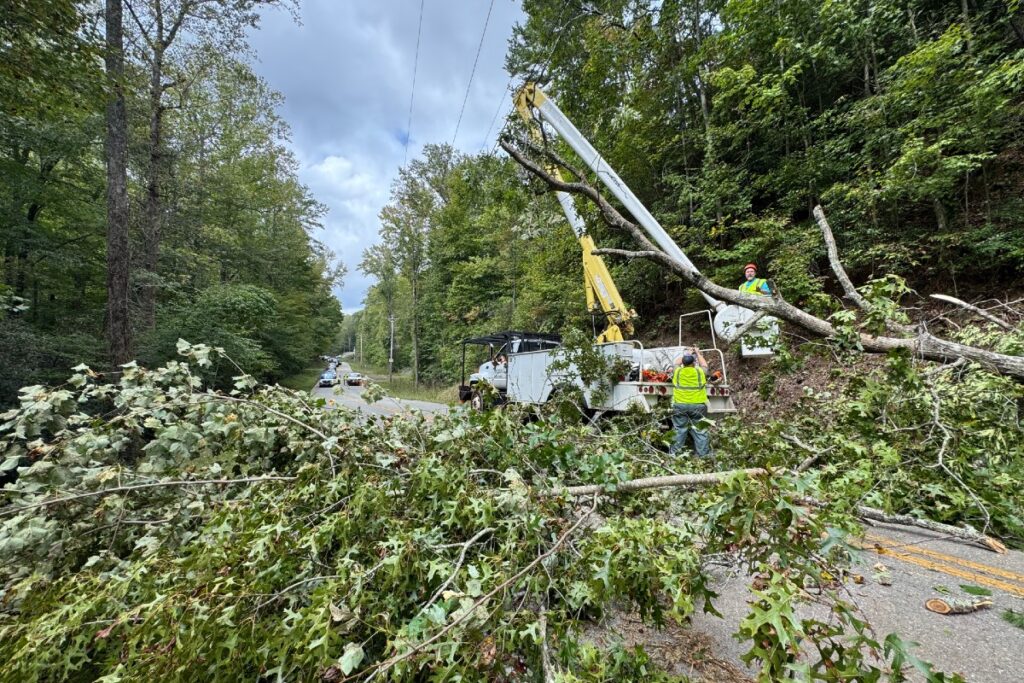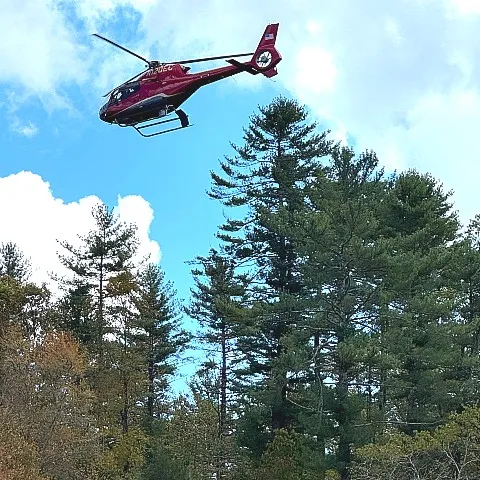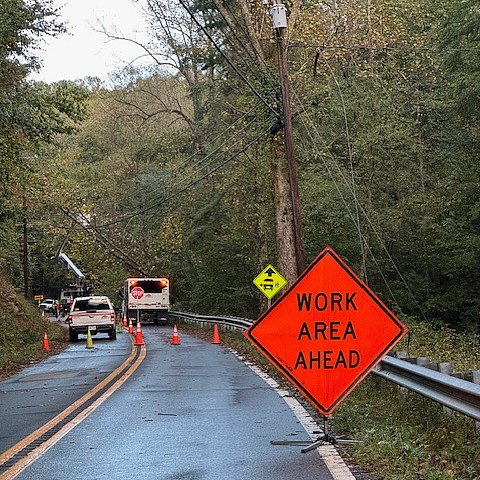
With Upstate residents reeling from the devastation wrought by Hurricane Helene on its deadly trek through South Carolina, federal, state and local officials scrambled throughout the week to deliver emergency services and get the lights back on for millions of Palmetto State residents.
On Oct. 2, President Joe Biden visited the Carolinas to survey storm-ravaged areas and ensure federal aid was reaching those in need.
“I’m here to say the United States, the nation, has your back,” Biden said. “We’re not leaving until you’re back on your feet completely.”
After meeting with state and local leaders and first responders in North and South Carolina, including Gov. Henry McMaster and U.S. Sen. Lindsey Graham, Biden stressed the country’s bipartisan response to natural disasters.
“In a moment like this … there are no Democrats or Republicans, there are only Americans,” Biden said. “And our job is to help as many people as we can as quickly as we can and as thoroughly as we can.”
Delivering more help
 Meanwhile, Palmetto State leaders are still working to repair critical infrastructure and deliver assistance to those in need.
Meanwhile, Palmetto State leaders are still working to repair critical infrastructure and deliver assistance to those in need.
“We’re making great progress,” McMaster told reporters on Oct. 3, “but we have a long way to go.”
As Statehouse Report went to press on Oct. 4, state officials said their top priorities remained clearing roadways, restoring power, operating shelters, distributing water and food, and assessing damage in the state’s hardest-hit areas. In support of those efforts, federal officials were processing state emergency assistance requests on an expedited basis, according to S.C. Emergency Management Director Kim Stenson.
“FEMA normally funds 75% of the cost for a disaster like this,” Stenson said Oct. 3. “However, because of the extraordinary circumstances of this disaster, we’ll be requesting today 100% federal funding … for a 180-day period.”
To date, 17 S.C. counties have received formal federal disaster declarations, with four more requests currently pending.
Closed roads, opening of shelters
As of Oct. 3, more than 300 roads remained closed across the state and 295 South Carolinians were in 18 medical and general-needs shelters. In addition, state-sponsored and nonprofit feeding operations were underway in 14 counties, including Greenville, Laurens, and Richland.
But even as state officials continued response and recovery efforts in regions that suffered the immediate brunt of Helene’s fury, they were also focused on the threat of further flooding, as downstream waterways swollen with floodwaters began to overflow their banks.
Of particular concern, according to state emergency officials, were the Pee Dee River and the Santee River in Georgetown, Williamsburg and Berkeley counties, which are expected to crest on Oct. 6.
‘Unprecedented damage’ to utility infrastructure
With devastated substations and tens of thousands of downed power lines, many entangled with fallen trees, representatives of the state’s major utilities pledged to have power restored for “the vast majority” of their customers by Oct. 4, but stressed the difficulties crews were facing.
For perspective, Central Electric Power Cooperative CEO Rob Hochstetler explained early in the week, it takes a four-person crew up to four hours to replace a single pole – and his company had more than 1,900 poles down.
Moreover, he said, the “utter destruction” that Helene inflicted on some parts of the Upstate created “unprecedented damage” to critical utility infrastructure.
“This is not a typical storm restoration,” Hochstetler said. “It’s a rebuild.”
But when asked whether burying power lines could help protect against future weather-related damage and outages – an idea floated by the state’s senior U.S. Sen. Lindsey Graham – some utility leaders noted the high cost to consumers.
“It’s expensive,” Dominion-S.C. President Keller Kissam said. “And if customers are going to pay for it, you’re going to put an unfair burden on some South Carolinians that maybe aren’t able to pay.”
Nevertheless, McMaster seemed supportive of the idea, saying he’d discussed it with President Biden on Wednesday.
“That would be a good federal project,” McMaster said. “It’s expensive, but we wouldn’t have some of the problems we have now if we had more [buried power lines] in certain places.”
By the morning of Oct. 4, more than 270,000 South Carolina homes were still without power, down from 1.3 million earlier in the week.
Downstream flooding and a ‘new normal’ Upstate
 As flood waters from the Upstate and North Carolina mountain regions rolled down through the state’s major waterways toward the ocean, officials advised citizens in low-lying areas along the Pee Dee and Santee rivers to monitor local media for emergency flooding alerts.
As flood waters from the Upstate and North Carolina mountain regions rolled down through the state’s major waterways toward the ocean, officials advised citizens in low-lying areas along the Pee Dee and Santee rivers to monitor local media for emergency flooding alerts.
Some of those downstream flooding effects were felt soon after the storm in the Columbia area, with water reported in homes and roadways on the Broad and Congaree rivers, which crested at near-record levels on Sept. 30.
But heading into the weekend, emergency managers were focused on rivers further downstream, particularly the Santee.
“Rivers in the far eastern part of the state are still rising,” S.C, Emergency Management Division Chief of Preparedness Andrew Phillips said on Oct. 4. “The Santee River in Georgetown and Berkeley County areas went into major flood stage early this afternoon and is expected to crest on Saturday, [staying] relatively high into next week.”
In Georgetown County, local officials told Statehouse Report they were already seeing impacts, but they believed the flooding would ultimately be limited to a handful of homes along the river.
“We’re starting to see some water coming over roadways,” Georgetown County spokesperson Jackie Broach said. “We’ve opened a shelter for anybody who feels they need to get to a safe place, … but we think it’s going to be a very isolated situation.”
Back in Columbia, the state’s federal emergency response coordinator, Brett Howard, advised all eligible citizens with storm damage to apply for FEMA assistance, even if they have insurance.
“We can’t duplicate what an insurance company does with federal funds,” Howard said. “But if there’s a gap in there, we can help meet and fill that gap.”
But even with all the federal and state resources being brought to bear, Howard noted that Helene will leave a permanent mark on the Upstate due to the extent of the devastation.
“We’re gonna build back better, but it’s not ever gonna be like it was,” Howard said. “There’s gonna be a new normal.”
- Have a comment? Send to: feedback@statehousereport.com.


